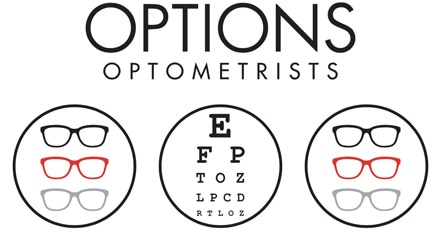Myopia Control
What is Myopia?
Myopia, also known as short-sightedness, is a common vision condition where close objects appear clear but distant ones are blurry. This is caused by the eyeball being too long or the cornea being too curved, causing light to focus in front of the retina instead of on it. Determining the primary cause is essential, as a longer-than-normal eye poses more significant risks than one with high focusing power. As myopia progresses with eye growth, the rear eye tissues become stretched and damaged.
This change once it occurs is irreversible, making it important that myopia is controlled as soon as possible.

Any level of myopia can increase the risk of eye problems such as retinal detachment, glaucoma, and cataracts. Higher myopia increases these risks, especially if the eye is longer than 26.5mm, which is known as pathological myopia. Even with mild myopia, there’s still a chance of developing glaucoma and or retinal detachments later. Keeping your child’s myopia from getting worse can help lower these risks. It also means that they most likely will not need as thick lenses as they may have done without treatment.
What are the risk factors?

Myopia development is influenced not only by genetic factors like a family history of short-sightedness but also by various environmental and behavioural factors. Studies show that children who engage more in close-up activities, such as using electronic devices, and spend less time outside are more prone to developing myopia. This trend might contribute to the rising occurrence of myopia in children globally. Also, children who start showing signs of myopia at a younger age are more likely to experience severe myopia later on. Problems with eye coordination (binocular vision disorders) have been associated with the worsening of myopia.
How to control myopia progression
The good news is that Options Optometrists have several ways that we can help to control and slow myopia progression in your child. We use a proactive approach to develop a custom treatment plan based on your child’s lifestyle, age and prescription.
Orthokeratology
Orthokeratology, or ortho-K, involves wearing custom-made hard lenses while you sleep. These lenses temporarily reshape the eye’s surface, giving clear vision without glasses or lenses the next day. On average, ortho-K slows myopia progression significantly. Ortho-K is currently only available at our Joondalup or Livingston (Canning Vale) locations.
Soft Contact Lenses
Multifocal soft contact lenses, commonly used by individuals over 45 to enhance near vision, derive their name from ‘multi’, meaning multiple, and ‘focal’, pertaining to focus. These lenses differ from single-vision lenses as they can simultaneously focus light from different distances. The retina reacts to these varying focus points by signalling a reduction in the growth of the eye.
Atropine Eye Drops
Atropine functions by relaxing certain muscles in the eye and has a long history of safe use for various eye conditions. It is believed that atropine also affects receptors in the retina that regulate eye growth.
Peripheral Spectacle Lenses
These innovative lenses appear identical to regular eyeglasses but use optics similar to custom contact lenses to slow down eyeball growth. These lenses provide children with an excellent non-invasive option for controlling myopia.
Myopia control is available at all Options Optometrists branches in Perth and Adelaide.
Contact your local Options Optometrist today to discuss myopia management options.
Frequently Asked Questions
When should you start myopia control?
Myopia control is ideally started as early as possible. The younger your child is when diagnosed with nearsightedness, the greater the benefit.











